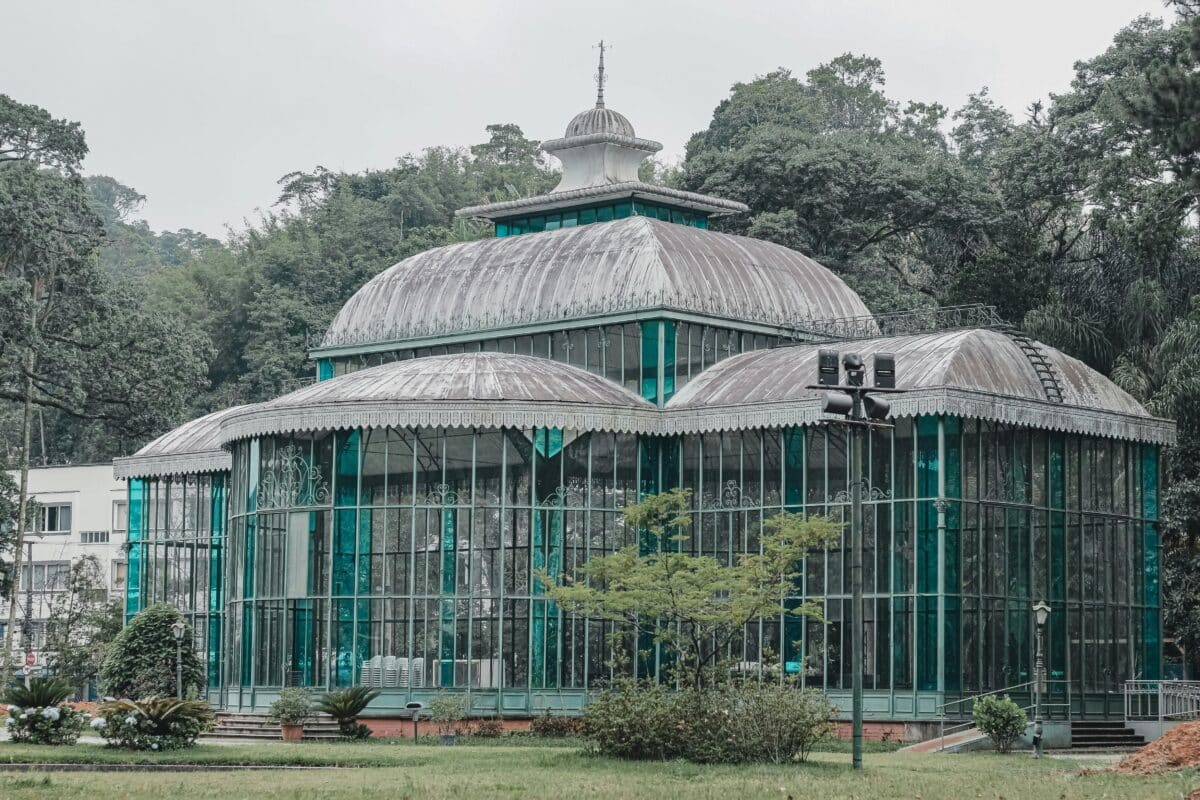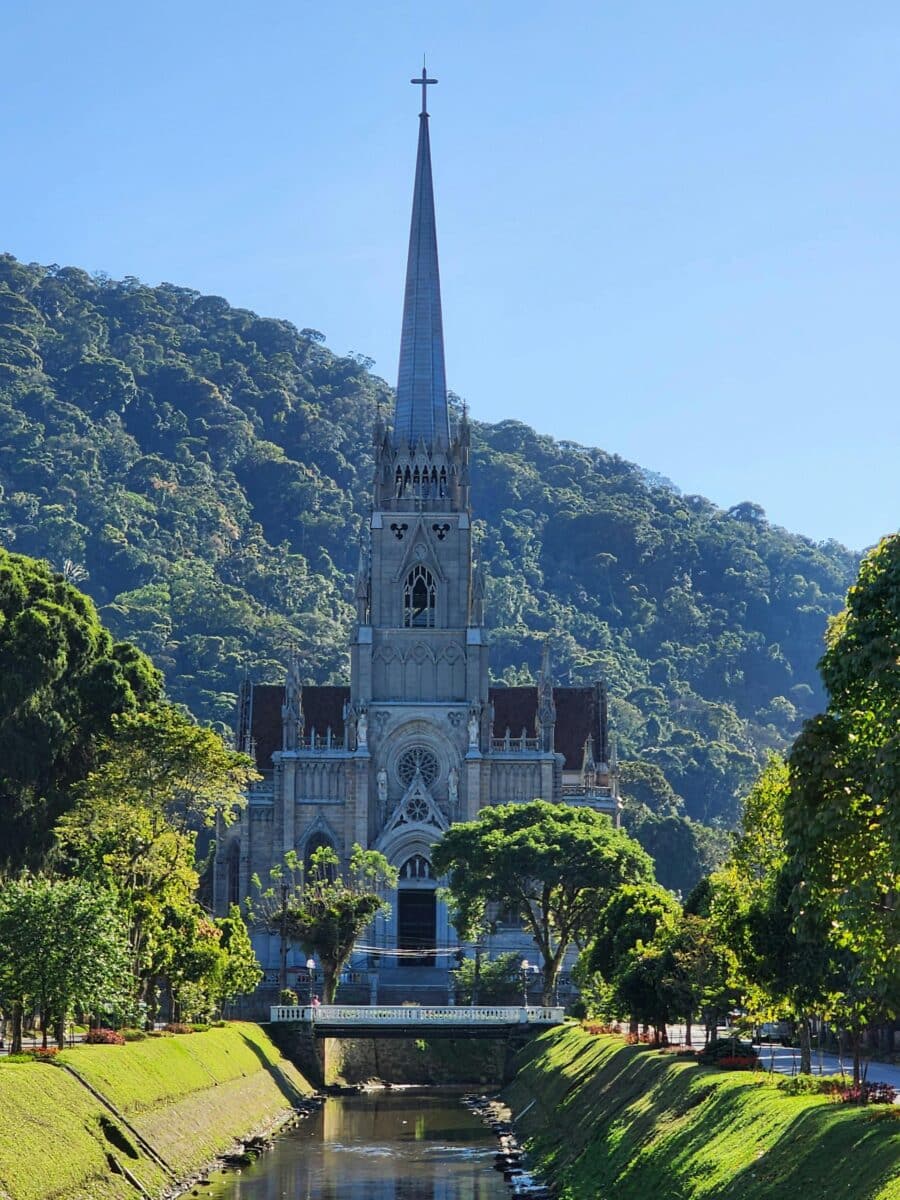Nestled in the heart of a breathtaking mountain range, the Imperial City of Petrópolis is a destination that effortlessly combines natural beauty with a rich history. Often referred to as Brazil’s “summer capital,” this charming city once served as the residencia de Verano del Emperor Dom Pedro II, and its historical roots are visible at every turn. If you’re drawn to historical architecture, you’ll find Petrópolis a treasure trove of cultural and architectural wonders, from the elegant Quitandinha Palace to the iconic Crystal Palace. Visitors looking for the right place to immerse themselves in Brazilian history will quickly fall in love with its many museums, including Casa de Santos Dumont and Casa da Princesa Isabel, both of which are también muy interesante for history enthusiasts.
Whether you’re exploring the Imperial Museum or wandering through the bustling shops on Rua Teresa, Petrópolis offers something for every traveler. The city’s unique combination of heritage and modernity makes it ideal for a cultural tour or a relaxed city tour. Many choose a private tour or guided tours to uncover hidden gems, while foreign luxury concierge services ensure a seamless experience for those who prioritize customer service essentials. For nature lovers, the cool climate and surrounding greenery provide the perfect backdrop for a peaceful retreat. Visitors planning a full-day tour or a day-use São José excursion from nearby Minas Gerais will find themselves enchanted by this charming city.
The best time to visit Petrópolis is now. Whether you’re captivated by historical architecture, enticed by tales of Count d’Eu, or simply looking for a cultural tour to deepen your understanding of Brazil’s legacy, this city offers an experience like no other. So, if you’re ready to visit al Museo, explore ponen unas stunning gardens, or indulge in the emotional intelligence that Petrópolis inspires, prepare for an unforgettable journey in one of Brazil’s most asimismo al muy bien destinations.
The Dedo de Deus: A Natural Marvel of Rio de Janeiro’s Mountains
The Dedo de Deus (God’s Finger) is arguably the most iconic rock formation in the mountain range of Rio de Janeiro, easily spotted from the towns of Guapimirim and Teresópolis. Rising to an impressive 5,551 feet (1,692 meters), this natural wonder resembles a hand pointing its index finger to the sky, inspiring its name. A fun fact: this peak marks the birthplace of rock climbing in Brazil and is such a beloved symbol that it features on the flag of the state of Rio de Janeiro.
Located within the Serra dos Órgãos National Park, a federal conservation area spanning 26,190 acres (10,600 hectares)—about the size of 7,900 American football fields—the Dedo de Deus is surrounded by equally stunning peaks, including the Escalavrado, Dedo de Nossa Senhora, Cabeça de Peixe, Capucho, and Nariz do Frade. This park is a must-visit for nature enthusiasts seeking a mild climate and breathtaking landscapes.
Declared a National Natural Heritage Site by IPHAN in 2002, the Dedo de Deus can be admired from the BR-116 highway (Rio–Teresópolis road), the city center of Teresópolis, and several scenic viewpoints. However, a tour guide might warn you about the unpredictable weather: the dense fog that frequently sweeps through this region can obscure the view within moments. So, if you’re planning a full-day excursion, keep your fingers crossed for clear skies! For those visiting the city of Rio de Janeiro, this makes for a remarkable escape into nature, offering a blend of adventure and tranquility.
The Imperial Museum: A Jewel of Petrópolis
The Imperial Museum is a defining symbol of Petrópolis and stands as one of Brazil’s most important historical institutions. Once the Summer Palace of Emperor Dom Pedro II, this museum houses exquisite 19th-century furniture, artworks, and personal belongings of the imperial family. Among its most prized possessions is the crown of Dom Pedro II, crafted in 1841 with a golden frame, 639 diamonds, and 77 pearls—a true masterpiece of the era.
Preservation here is taken seriously. Visitors are required to wear oversized slippers over their shoes to protect the palace’s original wooden floors, which adds a quirky charm as people shuffle through the galleries (bonus: it polishes the floor, too!). Security guards stationed throughout ensure the protection of the space and its treasures. However, photography is prohibited, so the only way to fully experience the museum is by visiting it yourself.
The history of the Imperial Museum dates back even before the founding of Petrópolis. The area, originally known as Fazenda do Córrego Seco, was purchased by Dom Pedro I and passed on to Dom Pedro II, who built this residencia de Verano del emperor—a retreat from the mild climate of the mountain region. The dining room, the first stop on the tour, showcases furniture from the São Cristóvão Palace in Rio de Janeiro. Without electricity, the palace relied on natural light and candlelit chandeliers. Meals were served early—lunch at 9 a.m. and dinner around 4 or 5 p.m.—and the kitchen was located in a separate building to minimize the risk of fire.
As you explore, you’ll encounter various unique spaces. The music and ballroom feature armless chairs designed for women’s voluminous skirts. There’s also a display of a 44-pound (20-kilogram) replica of the coronation attire worn by Dom Pedro II—imagine enduring Rio’s heat in that! The Emperor’s study, complete with his telescope, reflects his love of science. Every corner of the museum is steeped in the rich history of the Imperial City of Petrópolis, making it a must-see for anyone visiting this charming city.
The Quitandinha Palace: A Masterpiece of Luxury and History
The Quitandinha Palace (Palacio Quitandinha) is one of the most iconic landmarks in Petrópolis, originally built in the 1940s to be the largest and most luxurious hotel-casino in South America. Although its casino days are long gone, this architectural marvel now serves as both a condominium and a cultural center managed by SESC. Visitors can enjoy guided tours and fascinating exhibitions held throughout the year, all offered free of charge. Whether you’re a history enthusiast or just curious about unique places, this palace is a must-see during your visit.
Designed to impress, the Quitandinha Palace features an interior crafted by a renowned Hollywood set designer. Inspired by Brazil’s natural beauty, she incorporated elements of the sea and the forest into the décor: stair railings transformed into intricately sculpted concrete waves, light fixtures shaped like seashells, and even a massive aviary that once housed tropical birds like cockatoos and toucans. This attention to detail and creativity reflects the palace’s megalomaniac history, which never fails to leave visitors in awe.
The palace is more than just a historical building; it’s a space that captures the grandeur of a bygone era while remaining relevant as a cultural tour destination. Whether you’re strolling through its opulent halls, marveling at its lush surroundings, or taking in an exhibition, the Quitandinha Palace is an unforgettable highlight of any full-day excursion to Petrópolis.
The Enchanting House of Santos Dumont
Nestled in the heart of Petrópolis, the Casa de Santos Dumont is a charming testament to the life and ingenuity of the “Father of Aviation.” Designed by the inventor himself in 1918 and lovingly nicknamed “A Encantada,” this quaint French Alpine-style chalet is now one of the city’s most intriguing museums. It was officially designated a historic site in 1952 and converted into a museum in 1956, offering visitors a glimpse into the personal world of one of Brazil’s greatest visionaries.
The house is compact but full of character. The ground floor opens into a simple living space, while the mezzanine serves as both Dumont’s office and bedroom. Surprisingly, the house had no kitchen—Santos Dumont would order his meals from the nearby Palace Hotel, now the Catholic University of Petrópolis. Before even stepping inside, visitors are greeted by one of the home’s most iconic features: a “cut-out staircase.” At just 5 feet tall (1.52 meters), Dumont designed the steep steps to avoid hitting his heels, creating a staircase that some find surprisingly tricky to navigate. Tour guides often share amusing stories about visitors’ attempts to climb it.
Inside, the museum showcases personal belongings that tell the story of Santos Dumont’s inventive and adventurous spirit. Highlights include a complete collection of Victor Hugo’s works, a large Brazilian flag Dumont would fly above his house upon arriving in Petrópolis, and a whimsical balloon-shaped lamp gifted by Princess Isabel. Perhaps the most fascinating artifact is his signature white Panama hat, slightly dented at the top. Legend has it that the hat became deformed while Dumont helped extinguish a fire in a building in France—sparking a fashion trend in the process! For those with time to spare, the house also features a collection of the inventor’s letters, displayed near the entrance, offering a deeper look into his life and legacy.
The Crystal Palace: A Historic Gem of Petrópolis
The Crystal Palace is one of the most cherished attractions in Petrópolis, celebrated for its rich history and architectural elegance. Modeled after the grand glass structures of London and Porto, the palace was inaugurated in 1884. Four years later, it became the site of a momentous celebration for the abolition of slavery, during which Princess Isabel presented freedom letters to the last enslaved individuals in Petrópolis. This historic event solidified the palace’s role as a symbol of progress and change in Brazilian history.

Today, the Crystal Palace remains a vital part of the city’s cultural landscape, frequently hosting local events like the Bauernfest, an annual festival honoring German immigrants. Encircled by lush gardens, vibrant flowerbeds, and tranquil reflecting pools, the palace offers visitors a serene escape. Even without events, the space welcomes guests from 9 a.m. to 5 p.m., showcasing its minimalist interior with a small stage, ornate crystal-like chandeliers, and ambient lighting. Its charm lies as much in its exterior beauty as in its role as a hub for cultural gatherings.
At the entrance, visitors can find a small tourism information booth offering maps, restaurant recommendations, and tips for local attractions. A cozy souvenir shop nearby sells t-shirts, keychains, and refreshments, including hot chocolate and cold beverages. If you’re lucky enough to visit at night, the Crystal Palace takes on a magical glow under its evening lights, offering a romantic and enchanting experience—even when viewed from outside its gates.
Wrap-Up: Discover the Magic of Petrópolis
Petrópolis is more than just a city; it’s a living tapestry of Brazilian history, breathtaking landscapes, and vibrant culture. From the grandeur of the Imperial Museum and the charm of the Crystal Palace to the fascinating Casa de Santos Dumont and the natural beauty of its lush mountain surroundings, this city offers a perfect blend of historical richness and modern-day allure.
Whether you’re drawn to its historical architecture, captivated by its stories of innovation and royalty, or simply looking for a refreshing escape in a cool climate, Petrópolis has something for everyone. Its unique charm, welcoming atmosphere, and diverse attractions make it an unforgettable destination.
So why not plan your visit today? Take a guided tour, enjoy a stroll through its scenic streets, and immerse yourself in the history and culture of this charming city. Petrópolis is waiting to enchant you—come and experience it for yourself!


